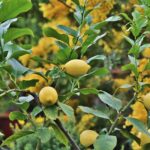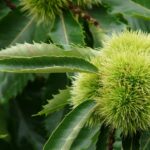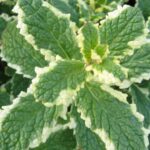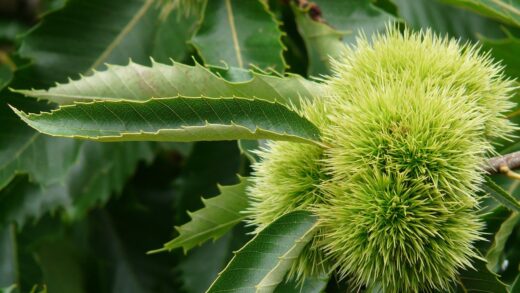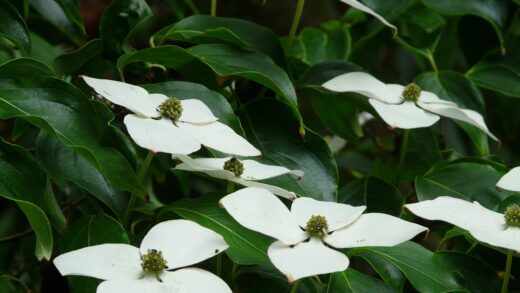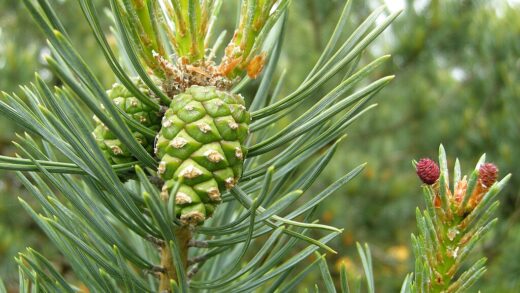Understanding the precise water requirements of a lemon tree is fundamental to its health, as both overwatering and underwatering can lead to significant problems. Lemon trees prefer a watering pattern that mimics their native subtropical environment: deep, infrequent soakings rather than light, frequent sprinklings. The primary goal of any irrigation strategy should be to maintain consistent moisture in the root zone while allowing the soil to partially dry out between waterings. This balance is critical for preventing root diseases and ensuring the tree can efficiently absorb the nutrients it needs to flourish and produce fruit.
The key to successful watering is learning to assess the soil’s moisture level accurately. A common and effective method is to manually check the soil by inserting a finger two to three inches below the surface. If the soil at this depth feels dry, it is time to water the tree. Relying on a fixed schedule is often ineffective, as a tree’s water needs can change dramatically based on weather, season, container size, and its stage of growth. Therefore, direct observation of the soil is a far more reliable indicator than simply watering every few days.
When it is time to water, the application should be thorough and deep, ensuring the entire root ball is saturated. For potted trees, this means continuing to add water until it flows freely from the drainage holes at the bottom of the container. This practice not only provides adequate moisture but also helps to flush out any accumulated salts from the soil, which can build up from fertilizers. For in-ground trees, a slow, deep soaking with a hose or drip irrigation system is ideal, encouraging the roots to grow deeper into the soil where moisture is more consistent.
After a deep watering, it is essential to allow the soil to dry sufficiently before the next application. This drying-out period is crucial for allowing oxygen to penetrate the soil and reach the roots, a process that is vital for root respiration and overall plant health. Constantly saturated soil deprives the roots of oxygen, creating an anaerobic environment that is a breeding ground for fungal pathogens responsible for root rot. Mastering this cycle of deep soaking followed by a partial drying period is the cornerstone of proper lemon tree irrigation.
Factors influencing water needs
A lemon tree’s demand for water is not static; it is influenced by a dynamic interplay of several environmental and physiological factors. The most significant of these is the prevailing climate and weather. During hot, dry, and windy conditions, the rate of transpiration—the process of water movement through a plant and its evaporation from leaves—increases dramatically. Consequently, the tree will require more frequent watering to replenish the lost moisture and prevent wilting and stress. Conversely, during cool, humid, or overcast weather, transpiration slows, and the tree’s water needs decrease accordingly.
More articles on this topic
The type of soil and the size and material of the container also play a crucial role, particularly for potted lemon trees. Porous containers like terracotta allow moisture to evaporate through their walls, causing the soil to dry out more quickly than in plastic or glazed ceramic pots. Similarly, a smaller pot holds less soil and water, necessitating more frequent irrigation than a larger one. The composition of the soil itself is also a factor; a sandy, well-draining mix will dry out faster than a denser mix with a higher content of organic matter.
The developmental stage and overall health of the lemon tree are also key determinants of its water requirements. A young, actively growing tree is dedicating resources to developing its root system, leaves, and branches, and therefore requires consistent moisture to support this growth. A mature tree, especially during the periods of flowering and fruit development, also has a high demand for water. A stressed or diseased tree may have a compromised root system that is less efficient at absorbing water, which requires careful water management to aid its recovery.
Seasonal changes throughout the year necessitate adjustments in watering frequency. In the spring and summer, when the tree is actively growing, it will have its highest water needs. As autumn approaches and temperatures cool, the tree’s growth slows, and its water requirements will gradually diminish. During the winter dormancy period, the need for water is at its lowest. It is particularly important to reduce watering for trees brought indoors for the winter to prevent the soil from becoming waterlogged in the lower light and cooler temperatures of an indoor environment.
The dangers of overwatering
Overwatering is one of the most common and damaging mistakes made in the care of lemon trees, often with fatal consequences. The primary danger of excessive watering is that it leads to a condition known as root rot. When the soil is constantly saturated, the air pockets that normally hold oxygen are filled with water. This anoxic environment effectively suffocates the roots, preventing them from carrying out their essential functions of absorbing water and nutrients. The weakened roots become highly susceptible to attack by waterborne fungal pathogens, such as Phytophthora, which thrive in these conditions.
More articles on this topic
The initial symptoms of overwatering can be deceptive, as they often mimic the signs of underwatering. The leaves may begin to yellow, wilt, and drop from the tree. This occurs because the damaged, rotting roots are no longer able to supply the foliage with the water it needs, causing the leaves to dehydrate despite the abundance of moisture in the soil. This can lead to a vicious cycle where the grower, seeing wilting leaves, applies even more water, further exacerbating the problem and accelerating the decline of the tree.
In addition to yellowing and wilting leaves, there are other signs that can indicate an overwatering problem. You might notice a musty or sour smell coming from the soil, which is a sign of anaerobic decomposition. The soil itself may feel constantly soggy or muddy to the touch and may even have visible mold or algae growing on its surface. For potted trees, lifting the pot may reveal that it feels unusually heavy for its size due to the excess water retained in the soil. Early recognition of these signs is critical to saving the tree.
Preventing overwatering is far easier than trying to cure an advanced case of root rot. The key is to adhere to a proper watering technique: always check the soil moisture before watering and only apply water when the top few inches are dry. Ensure that the pot has adequate drainage holes and that the soil mix is well-aerating. If you suspect you have overwatered, allow the soil to dry out as much as possible before watering again. For severe cases, it may be necessary to repot the tree into fresh, dry soil, trimming away any dark, mushy, and obviously rotten roots in the process.
Signs of underwatering and drought stress
While less common than overwatering in container-grown trees, underwatering can also cause significant stress and damage to a lemon tree. The most immediate and obvious sign of drought stress is the wilting or drooping of leaves. This is a natural response by the plant to conserve water; as the internal water pressure, or turgor, within the leaf cells decreases, the leaves lose their rigidity and begin to sag. If the tree is watered promptly at this stage, the leaves will typically recover quickly and return to their normal appearance.
If the period of drought is prolonged, the symptoms will become more severe. The leaves may begin to curl inwards and feel dry or crispy to the touch. The tips and edges of the leaves might turn brown as the tissue begins to die from a lack of water. In a more advanced stage of underwatering, the tree will start to shed its leaves, flowers, and even young fruit. This is a survival mechanism designed to reduce the amount of water the tree loses through transpiration, allowing it to conserve its limited resources for the main stems and roots.
Beyond the foliage, the soil itself provides clear clues of underwatering. The soil will be visibly dry and may pull away from the sides of the pot as it shrinks. It can become hard and compacted, making it difficult for water to penetrate when you do eventually irrigate. In such cases, the water may simply run down the gap between the soil and the pot and out the bottom without actually soaking the root ball. This requires a different watering approach, such as bottom watering or a very slow, prolonged top watering, to ensure the soil becomes fully rehydrated.
Correcting underwatering is generally straightforward if it is caught early. Provide the tree with a deep, thorough watering to completely rehydrate the root ball. For severely desiccated potted trees, it can be beneficial to soak the entire pot in a tub of water for about an hour to ensure the soil is fully saturated. After a good watering, the tree should show signs of recovery within a few hours. Moving forward, adjust your watering schedule or monitoring method to be more attentive to the tree’s needs to prevent future episodes of drought stress.
Water quality considerations
The quality of the water used for irrigation can have a long-term impact on the health of a lemon tree, especially for those grown in containers. Tap water in many municipalities is treated with chlorine and may be “hard,” meaning it has a high concentration of dissolved minerals like calcium and magnesium. While these minerals are not typically harmful in small amounts, they can accumulate in the soil over time. This buildup can raise the soil’s pH, making it more alkaline, which can interfere with the tree’s ability to absorb essential micronutrients like iron and zinc, leading to deficiencies.
Another issue with tap water is the potential for high levels of salts or total dissolved solids (TDS). As you water the tree and the moisture evaporates or is absorbed, these salts are left behind in the soil. Over time, this accumulation of salts can create a saline environment that is toxic to the roots, a condition known as fertilizer burn or salt burn. This can damage the roots’ ability to absorb water and can lead to symptoms such as leaf scorch, where the tips and margins of the leaves turn brown and appear burnt.
To mitigate the potential negative effects of tap water, there are several strategies that can be employed. If your tap water is heavily chlorinated, allowing it to sit in an open container for 24 hours before use can help some of the chlorine to dissipate. To combat the buildup of salts and minerals, it is important to periodically flush the soil. This is done by watering the tree heavily with a large volume of water, allowing it to drain completely, and then repeating the process. This leaches the excess salts out of the soil profile.
For those with very hard or poor-quality tap water, using an alternative water source can be beneficial. Rainwater is an excellent choice as it is naturally soft, slightly acidic, and free of added chemicals and minerals. Collecting rainwater in a barrel for irrigating your lemon tree can significantly improve its long-term health. Filtered water or reverse osmosis water are other high-quality options, although they may be less practical for routine use. Regardless of the water source, being mindful of its quality is an important aspect of advanced lemon tree care.
📷 Pixabay











